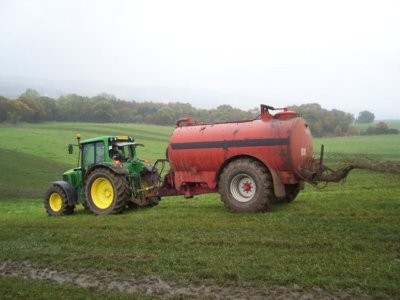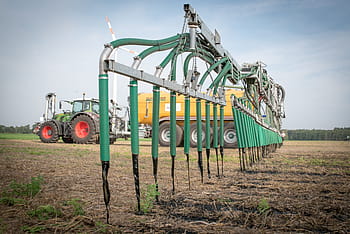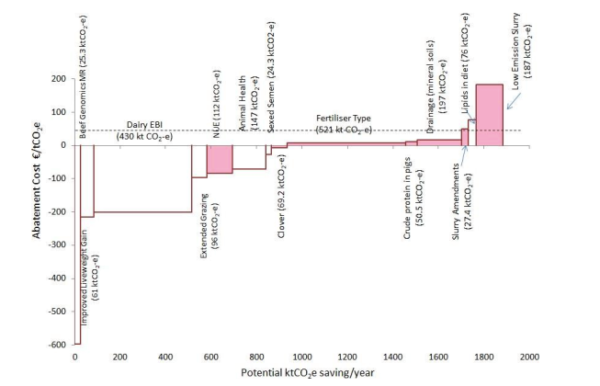Accounting for over one third of Greenhouse Gas (GHG) emissions (CSO, 2018), the agricultural sector is responsible for the highest amount of pollution of any in the Irish economy. In addition to having a carbon intensity above the EU average, the majority of the sectors emissions come in the form of methane and nitrogen gases. Teagasc’s Marginal Abatement Cost Curve (MACC) (figure 3.) outlines two approaches to reducing nitrogen and methane emissions using slurry amendments and low-emission spreading techniques. The government’s 2019 Climate Action Plan (CAP) considers these landspreading measures vital in achieving 2030 emission targets given the necessity of the agricultural sector achieving its full abatement potential if targets are to be met. Teagasc suggests that increased nitrogen efficiency is required for abatement with this best being achieved through appropriate soil nutrient and slurry management.
Summary
Both the 2017 National Abatement Plan, and the 2019 Climate Action Plan (CAP) highlight the importance of capital investment in promoting sustainable, low emission slurry spreading. This typically refers to the technological improvements made in the field of slurry spreading, transitioning from the traditional splash plate method (figure 1) toward the use of the trailing shoe device (figure 2).

Figure 1:Splash Plate Slurry spreading

Figure 2: Trailing Shoe Surry Spreading
The splash plate slurry spreader is the most popular in Ireland due to its simplicity, the efficiency of the mechanism and its low cost. Unlike in other European countries, there are few regulations on the splash plate, other than the requirement for the user to fix it at a low trajectory. When compared to the more expensive trailing shoe methods used throughout Europe, splash plate spreading leads to a higher level of nitrogen and ammonia losses. In addition to causing air pollution, splash plate spreaders reduce efficiency, as the nitrogen lost in the air needs to be replaced. Trailing shoe methods deliver slurry directly to the line of the soil, achieving a uniform line of slurry on the soil surface which reduces nitrogen losses. The Teagasc MACC refers specifically to the decoupling of nitrous oxide emissions from production with the use of low emission fertilizers and improvements in nitrogen use efficiency central to achieving this. This recommendation fed into the government’s 2019 CAP, which committed to improving nitrogen use efficiency. The steps necessary for achieving this include the development of a blueprint for low nitrogen use; reducing nitrogen fertilizer use and improving the adoption of low emission slurry spreading equipment. Teagasc estimates that 50% of land spreading is undertaken by agricultural contractors and as such, policies designed to transition toward more efficient technologies would target these contractors, as opposed to individual farmers.
Amendments to the type of slurry and fertilizers spread have also been discussed as methods of reducing methane and nitrogen emissions. Teagasc suggests that this could be done by acidifying manures and slurries so as to reduce emissions over the storage period. They estimate that this process would reduce landspreading associated methane emissions by 80% and ammonia by 70%.
Marginal Abatement Cost Curves (MACCs) outline the options available for reducing emissions. These options are ranked on both relative cost and mitigation potential. The relative cost of the measure (Cost (€)/ CO2 reduction (mega tonnes)) is recorded on the Y-axis by the height of the associated column and the abatement potential (CO2 eq. (mega tonnes)) is recorded on the X-axis by the width of the column. In Figure 3, we can see that the interventions pertaining to land spreading while effective in terms of abatement, are cost prohibitive. This might be expected given they represent technological and modal transitions which require investment, as opposed to simple efficiency improvements or behavioural changes.
Figure 3: MACC Teagasc

Source: An Analysis of Abatement Potential of Greenhouse Gas Emissions in Irish Agriculture 2021-2030, by Teagasc, 2018.
Low emission slurry spreading, as seen in figure 2, offers significant abatement potential however as we can also see the cost is especially prohibitive. The authors suggest that were they to only account for greenhouse gasses, this policy would be omitted from the abatement plan. However, it becomes cost effective when the benefits of ammonia abatement are accounted for also. Ammonia is a highly reactive and soluble alkaline gas (Air Pollution Information System (APIS)) which is harmful to ecosystems due to negative effects on vegetation. Excess ammonia can also lead to increases in nitrification and denitrification, leading indirectly to increased greenhouse gas emissions. As discussed above, trailing shoe technology reduces ammonia loss when landspreading.
Amendments to the slurry and fertilizer applied to the land, while not as effective as technological improvements in spreading techniques, are considerably less costly. As was the case with improvements in spreading techniques, alterations to the chemicals applied to the land can be effective in abating both greenhouse gasses and ammonia and as such represent cost-effective environmental measures.
References
Apis.ac.uk (2019). Ammonia | Air Pollution Information System. [online] Available at: http://www.apis.ac.uk/overview/pollutants/overview_NH3.htm [Accessed 9 Aug. 2019].
Casey, D. (2018). Making a splash. [online] Independent.ie. Available at: https://www.independent.ie/business/farming/machinery/making-a-splash-slurry-spreading-machinery-is-evolving-rapidly-but-splash-plate-still-most-popular-36518007.html [Accessed 8 Aug. 2019].
Ireland, DCCAE. Climate Action Plan. Dublin, 2019. Available at: https://www.dccae.gov.ie/en-ie/climate-action/topics/climate-action-plan/Pages/climate-action.aspx [Accessed 8 Aug. 2019].
Ireland, Teagasc. An Analysis of Abatement Potential of Greenhouse Gas Emissions in Irish Agriculture 2021-2030. Dublin, 2018. Available at:
https://www.teagasc.ie/media/website/publications/2018/An-Analysis-of-Abatement-Potential-of-Greenhouse-Gas-Emissions-in-Irish-Agriculture-2021-2030.pdf [Accessed 8 Aug. 2019].
Keywords
Reference this
Policymeasures.com (2022). Landspreading Measures. Available at: https://policymeasures.com/measure/landspreading-measures/. Last accessed: 29-05-2022.

